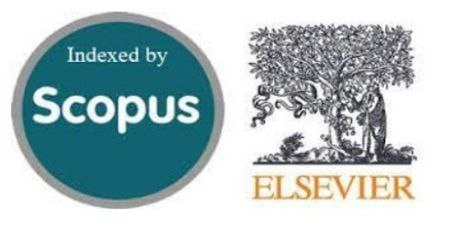Exploring the Impact of Functional Exercise Rehabilitation on Neuroplastic Biomarker Changes in Cardiovascular Disorders
Keywords:
functional exercise rehabilitation- neuroplasticity biomarker- cardiovascular disorderAbstract
This narrative review explores the interconnected roles of neuroplasticity, cardiovascular health, and functional exercise rehabilitation. By reviewing recent literature, the study identifies how various exercise interventions—including aerobic training, resistance training, balance exercises, and combined modalities—affect neuroplastic biomarkers like brain drive eutrophic factor (BDNF) relevant to cardiovascular disorders. Evidence suggests that physical activities such as aerobic training enhance (BDNF) expression, improving cognitive functions and cardiovascular health. Balance and proprioception exercises effectively induce cortical changes, enhancing stability and motor control. Moreover, multimodal rehabilitation approaches integrating cognitive and physical training have shown superior outcomes in stroke rehabilitation, suggesting their potential application in broader cardiovascular conditions. Overall, this review highlights the importance of a holistic and integrated rehabilitation approach in improving neuroplasticity and cardiovascular outcomes, advocating for personalized rehabilitation strategies tailored to individual patient needs.
Downloads
References
1. Mercadante AA, Tadi P. Neuroanatomy, Gray Matter. StatPearls [Internet]. 2022.
2. Purves D, Augustine GJ, Fitzpatrick D. Neuroscience The Internal Anatomy of the Spinal Cord: Sunderland (MA): Sinauer Associates; 2001.
3. Bairey Merz CN, Elboudwarej O, Mehta P. The autonomic nervous system and cardiovascular health and disease. A complex balancing act. JACC Heart Fail. 2015;3(5):383-5. [PMID: 25951758]
4. Iellamo F, Legramante JM, Massaro M, Raimondi G, Galante A. Effects of a Residential Exercise Training on Baroreflex Sensitivity and Heart Rate Variability in Patients With Coronary Artery Disease A Randomized, Controlled Study. 2000. [PMID: 11085961]
5. Poletti S, Aggio V, Hoogenboezem TA, Ambrée O, de Wit H, Wijkhuijs AJM. Brain-derived Neurotrophic Factor (BDNF) and gray matter volume in bipolar disorder. European Psychiatry. 2017;40:33-7. [PMID: 27837670]
6. Hashimoto T, Fukui K, Takeuchi H, Yokota S, Kikuchi Y, Tomita H. Effects of the BDNF Val66Met Polymorphism on Gray Matter Volume in Typically Developing Children and Adolescents. Cerebral Cortex. 2016;26(4):1795-803. [PMID: 26830347 ] [PMCID: PMC4785961]
7. Behm D, Colado JC. The effectiveness of resistance training using unstable surfaces and devices for rehabilitation. International journal of sports physical therapy. 2012;7(2):226.
8. Mackay CP, Kuys SS, Brauer SG. The Effect of Aerobic Exercise on Brain-Derived Neurotrophic Factor in People with Neurological Disorders: A Systematic Review and Meta-Analysis. Neural Plast. 2017;2017:4716197. [PMID: 29057125 ] [PMCID: PMC5625797]
9. Miyamoto T, Hashimoto S, Yanamoto HAUIM, Nakano Y, Sekiyama T. Response of brain-derived neurotrophic factor to combining cognitive and physical exercise. Eur J Sport Sci. 2018;18(8):1119-27. [PMID: 29842831]
10. Woo MA, Macey PM, Fonarow GC, Hamilton MA, Harper RM. Regional brain gray matter loss in heart failure. J Appl Physiol. 2003;95:677-84. [PMID: 12716866]
11. Amiya E, Watanabe M, Komuro I. The Relationship between Vascular Function and the Autonomic Nervous System. Ann Vasc Dis. 2014;7(2):109-19. [PMID: 24995054] [PMCID: PMC4072858]
12. Draganski B, Gaser C, Busch V, Schuierer G, Bogdahn U, May A. Changes in grey, matter induced by training. Nature. 2004;427(6972):311-2. [PMID: 14737157]
13. Vuorinen M, Damangir S, Niskanen E, Miralbell J, Rusanen M, Spulber G. Coronary heart disease and cortical thickness, gray matter and white matter lesion volumes on MRI. PLoS One. 2014;9(10). [PMID: 25302686 ] [PMCID: PMC4193798]
14. Busch JC, Lillou D, Wittig G, Bartsch P, Willemsen D, Oldridge N. Resistance and balance training improves functional capacity in very old participants attending cardiac rehabilitation after coronary bypass surgery. J Am Geriatr Soc. 2012;60(12):2270-6. [PMID: 23176104]
15. Rogge AK, Röder B, Zech A, Hötting K. Exercise-induced neuroplasticity: Balance training increases cortical thickness in visual and vestibular cortical regions. Neuroimage. 2018;179SP - 471:479. [PMID: 29959048]
16. Woost L, Bazin PL, Taubert M, Trampel R, Tardif CL, Garthe A. Physical Exercise and Spatial Training: A Longitudinal Study of Effects on Cognition, Growth Factors, and Hippocampal Plasticity. Sci Rep. 2018;8(1):1-13. [PMID: 29523857 ] [PMCID: PMC5844866]
17. Marcori AJ, Okazaki VHA. Motor repertoire and gray matter plasticity: Is there a link? Med Hypotheses. 2019;130. [PMID: 31383345]
18. Schaare HL, Kharabian Masouleh S, Beyer F, Kumral D, Uhlig M, Reinelt JD. Association of peripheral blood pressure with gray matter volume in 19- to 40-year-old adults. Neurology. 2019;92(8):E758-E73. [PMID: 30674602]
19. Iqbal AM, Jamal SF, Palatini P, Julius S. Essential Hypertension The Role of Cardiac Autonomic Function in Hypertension and Cardiovascular Disease. StatPearls [Internet]. 2022;11:199-205. [PMID: 19442329]
20. Anazodo UC, Shoemaker JK, Suskin N, st. Lawrence KS. An investigation of changes in regional gray matter volume in cardiovascular disease patients, pre and post cardiovascular rehabilitation. Neuroimage Clin. 2013;3:388-95. [PMID: 24273722] [PMCID: PMC3814972]
21. Phillips C. Lifestyle Modulators of Neuroplasticity: How Physical Activity, Mental Engagement, and Diet Promote Cognitive Health during Aging: Hindawi Limited; 2017.
22. Lövdén M, Bäckman L, Lindenberger U, Schaefer S, Schmiedek F. A Theoretical Framework for the Study of Adult Cognitive Plasticity. Psychol Bull. 2010;136(4):659-76. [PMID: 20565172]
23. Matura S, Fleckenstein J, Deichmann R, Engeroff T, Füzéki E, Hattingen E. Effects of aerobic exercise on brain metabolism and grey matter volume in older adults: results of the randomised controlled SMART trial. Transl PsychiatryVL - 7. 2017(7):e1172. [PMID: 28934191 ] [PMCID: PMC5538117]
24. Ploughman M, Eskes GA, Kelly LP, Kirkland MC, Devasahayam AJ, Wallack EM. Synergistic Benefits of Combined Aerobic and Cognitive Training on Fluid Intelligence and the Role of IGF-1 in Chronic Stroke. Neurorehabil Neural Repair. 2019. [PMID: 30816066]

Downloads
Additional Files
Published
Issue
Section
License
Copyright (c) 2025 Armin Gorouhi (Corresponding Author); Adebayo Clement olaide, Daniel López-López, Fernando Iellamo Iellamo, Hadi Nobari (Author)

This work is licensed under a Creative Commons Attribution-NonCommercial 4.0 International License.







